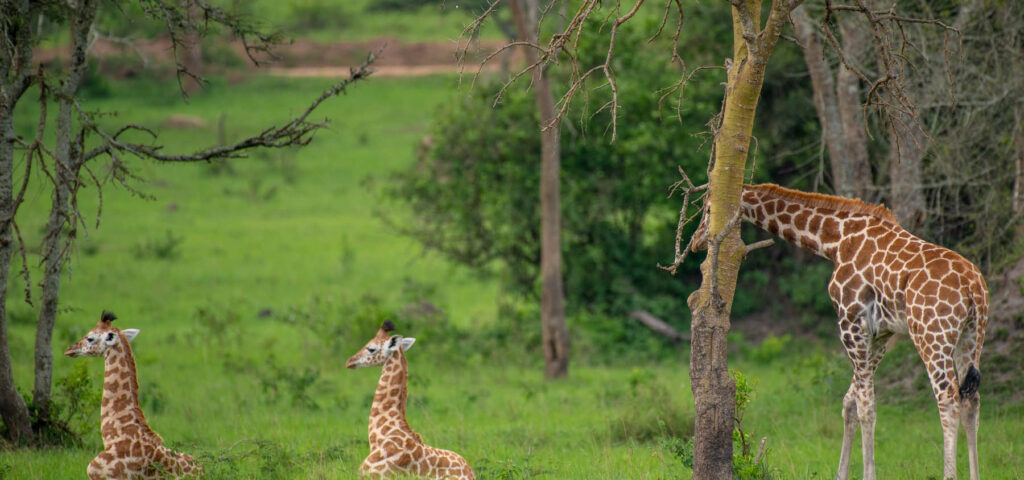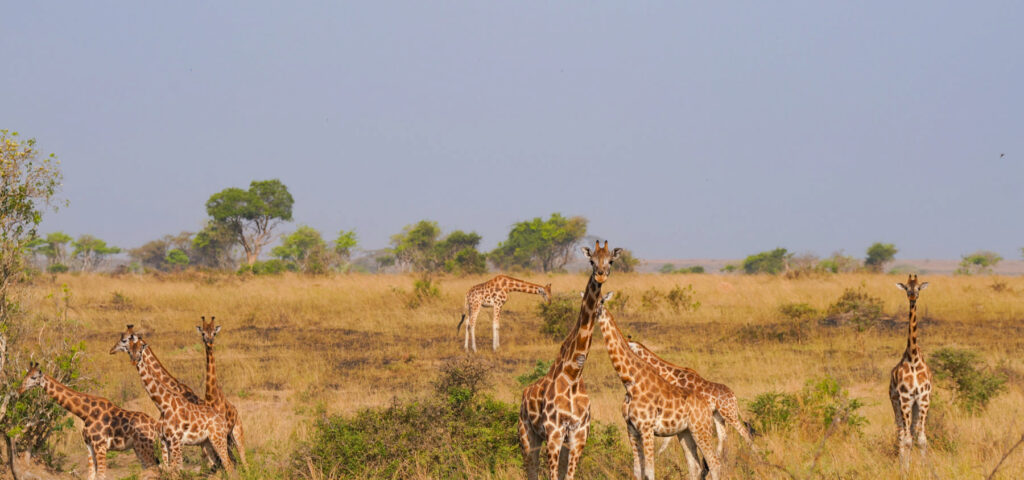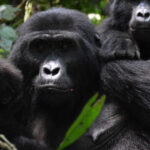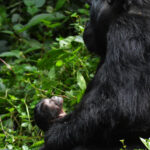Every year on June 21st, we celebrate World Giraffe Day, and here in Uganda, we’ve got a special reason to mark the occasion. Uganda is home to the Nubian giraffe (previously known as Rothschild’s giraffe)—one of the rarest and most endangered giraffe species in the world.
These gentle giants are more than just icons of the savannah. They’re a conservation success story in the making, and Uganda is leading the way. I’ve even had the privilege of working with the Uganda Wildlife Authority and partners to help translocate giraffes from the northern side of Murchison Falls National Park to the southern side—a move that helped expand their range and improve their chances of long-term survival.
Let’s dive into some of the common questions people ask—and what makes these animals so special.
So, what exactly is the Nubian giraffe?
The Nubian giraffe is one of the rarest giraffe subspecies and a distinct branch of the northern giraffe family. It’s also the only giraffe species found in Uganda. For a long time, it was commonly referred to as Rothschild’s giraffe, but after more detailed genetic studies, it’s now recognized under the Nubian classification.
What sets it apart from other giraffes in East Africa and the rest of the continent?
- Distinct coat pattern: Nubian giraffes have pale, creamy-colored patches with sharp edges and no markings on their lower legs, giving the appearance of wearing white socks.
- Range: While other giraffes like the Masai giraffe roam parts of Kenya and Tanzania, and reticulated giraffes are mostly found in northern Kenya and parts of Ethiopia, the Nubian giraffe is primarily found in Uganda and small parts of South Sudan.
- Size and build: Nubian giraffes tend to be slightly taller and lighter in coat color compared to Masai giraffes, which have darker, leaf-like blotches.
- Genetics: According to recent research by the Giraffe Conservation Foundation, the Nubian giraffe is genetically distinct from its cousins. In fact, despite all giraffes looking fairly similar to the untrained eye, there are actually four genetically confirmed giraffe species, with the Nubian being one of them.
So if you’re spotting a giraffe in Uganda with pale, clearly defined patches and white lower legs—you’re looking at a Nubian giraffe. And that’s a pretty special sight, considering they’re critically endangered and found in very few places in Africa.
Where can I see giraffes in Uganda?

Uganda is one of the few places in Africa where you can see the Nubian giraffe in the wild. The main strongholds are:
- Murchison Falls National Park – the largest population lives here.
- Lake Mburo National Park – giraffes were reintroduced here in 2015.
- Kidepo Valley National Park – a remote and beautiful area in the northeast.
- Pian Upe Wildlife Reserve – giraffes were introduced here in 2019.
If you’re visiting Murchison Falls, you’ll see them mostly on the northern plains, although in recent years, we’ve also started seeing them on the southern side too—thanks to successful conservation relocations.
Why are giraffes endangered?
While giraffes might look like they’ve got it made—tall, graceful, and seemingly calm—life isn’t always easy for them.
Some of the biggest threats include:
- Poaching, particularly from snares meant for other animals.
- Habitat loss due to human settlement and agriculture.
- Conflict zones, which reduce their safe range.
What’s being done to protect them?
A lot, thankfully. The Uganda Wildlife Authority (UWA), together with organizations like the Giraffe Conservation Foundation (GCF), has been working hard to bring back giraffe populations.
One key effort has been translocation. This is where giraffes are safely moved from one area to another to expand their habitat and help create new, genetically diverse populations.
I’ve personally participated in one of these operations in Murchison Falls, where we carefully moved giraffes across the Nile—from the more populated north to the southern sector of the park. It was an incredible experience, and it’s already paying off. We’re now seeing giraffes thriving in areas where they were once absent.
Are giraffes social animals?
Yes, though maybe not in the way you’d expect. Giraffes live in loose, open groups, often changing companions from day to day. You might see a group of females and calves one moment, and then a mix of males and juveniles later. They’re not territorial and generally peaceful.
One fun fact? Male giraffes sometimes engage in something called “necking.” It’s a form of sparring where they swing their necks and heads at each other to establish dominance. It looks dramatic, but it’s usually more of a display than a fight.
Do they sleep standing up?
Yes, giraffes do sleep standing up most of the time. But they only need about 30 minutes of sleep a day—often broken into short naps. That’s not much! And when they do lie down, they remain very alert because predators like lions are always a threat.
How tall do they get?
Really tall! Nubian giraffes can grow up to 6 meters (about 20 feet) high. Even newborn calves are taller than most people, standing at around 1.8 meters (6 feet) at birth.

Their long necks help them reach treetop leaves that few other animals can access. It also gives them an incredible vantage point to spot danger from far away.
What can travelers do to support giraffe conservation?
Here are a few simple ways you can help:
- Visit responsibly – Choose tour operators like Nandi Adventures that support conservation and work with local communities.
- Learn before you go – Understanding the wildlife you’re seeing adds so much to the experience.
- Spread the word.
- Say no to illegal wildlife products – Even things like giraffe hair jewelry in some markets contribute to poaching.
And if you’re planning a trip to Uganda, let’s chat! We’d love to show you these giraffes in their natural habitat.
Final thoughts
The Nubian giraffe isn’t just a symbol of Uganda’s wild beauty—it’s a symbol of hope. From a population that was once on the verge of collapse, to thriving groups across four protected areas, this is one of Africa’s conservation wins.
But it’s not over yet. Giraffes still face challenges, and continued efforts are needed to ensure they remain a part of Uganda’s landscape for generations to come.
So this World Giraffe Day, take a moment to appreciate the world’s tallest land mammal—and maybe plan that safari you’ve been dreaming of.
Ready to see them in the wild?
Traveling to Uganda for a safari is more than just a holiday—it’s an opportunity to make a difference. Every safari and every visit supports Uganda’s commitment to sustainable tourism, wildlife conservation, and community development.
Uganda stands out as an ideal destination for big game, birding, and primates safaris, offering an unmatched combination of adventure, natural beauty, and cultural richness. Whether you’re a wildlife enthusiast, a photographer, or simply someone seeking a transformative travel experience, Uganda delivers it all.
Get in touch with our safari experts for a free no-obligation quote.



